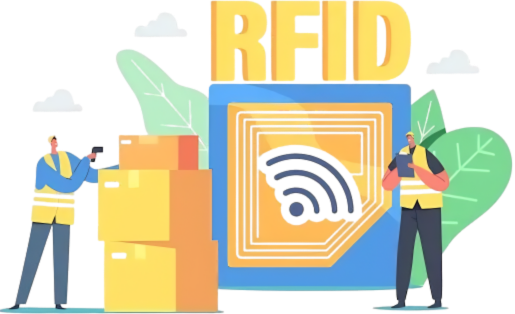What is Property, Plant, and Equipment (PP&E)?
PP&E, often referred to as fixed or tangible assets, are the physical assets that a company holds with a degree of permanence. These assets fall into the category of noncurrent assets, which implies they have a useful life extending well beyond one year.
Examples of PP&E are diverse and include machinery, vehicles, buildings, furniture, and even land. Notably, land retains its value and is usually recorded at its current market valuation on the balance sheet.
TL;DR
Property, Plant, and Equipment (PP&E) are essential long-term assets crucial for a company’s operations.
They encompass tangible assets like machinery, buildings, vehicles, and land, with a lifespan of over one year.
Calculating Net PP&E involves adding gross value and capital expenditures and subtracting accumulated depreciation.
PP&E offers real-time benefits, including insights into a company’s financial health, strategic planning, and collateral for financing.
Why Property, Plant, and Equipment (PP&E)is critical to an organization?
- Securing Long-Term Success: PP&E investments epitomize a company’s commitment to its future. Robust fixed assets presence mirrors long-term aspirations and is particularly evident in capital-intensive industries like manufacturing.
- Financial Insight: Investors and analysts meticulously dissect PP&E figures to fathom the manner in which a company channels its capital, be it through capital expenditures or asset divestitures. This analysis unfurls insights into the company’s profitability and fiscal robustness.
- Strategic Capital Expenditure Planning: PP&E figures serve as the lighthouse guiding capital expenditure decisions. By vigilantly overseeing and evaluating PP&E, companies can effectively discern when assets necessitate repairs, replacements, or the adoption of advanced technologies. This preemptive approach paves the way for streamlined operations.
- Collateral and Financing Flexibility: The allure of PP&E extends to its role as collateral for loans. This unique quality empowers companies to secure financing when circumstances dictate, efficiently managing cash flow and bankrolling expansion and strategic initiatives.
Gross PP&E vs. Net PP&E and their calculation.
When analyzing PP&E on a company’s balance sheet, you’ll often see two terms: Gross PP&E and Net PP&E. They represent different figures and have distinct meanings.
Gross PP&E
Gross PP&E represents the total value of all the property, plant, and equipment a company owns, before accounting for depreciation. It includes the original purchase price of assets like land, buildings, and machinery, along with any additional costs tied to acquiring those assets—such as installation, shipping, or taxes.
Formula:
Gross PP&E=Total cost of acquisition of assets.
For example, if a company purchases a factory building for $2 million, installs new machinery for $500,000, and spends an additional $100,000 on transportation and setup costs, the Gross PP&E would be:
Gross PP&E = 2,000,000 + 500,000 + 100,000 = 2,600,000
Net PP&E
Net PP&E represents the value of a company’s property, plant, and equipment after accounting for accumulated depreciation and impairment. This figure represents the book value of the company’s assets, which gives a more realistic picture of their current worth. Depreciation is deducted from Gross PP&E to account for wear and tear or aging of the assets over time. This helps reflect how much the assets are truly worth today, compared to their original cost.
To navigate the landscape of PP&E, it’s crucial to wield the right calculations. The formula for determining Net PP&E is as follows:
Net PP&E = Gross PP&E – Accumulated Depreciation
For example, if the factory mentioned earlier has accumulated $500,000 in depreciation over the years, then the Net PP&E would be:
Net PP&E = 2,600,000 – 500,000 = 2,100,000
Net PP&E gives a more accurate representation of a company’s current fixed asset value, which is critical for financial analysis, such as evaluating the company’s capital efficiency, investment, and asset management.
Investment analysts and accountants leverage these PP&E figures as invaluable tools to gauge a company’s fiscal health and its allocation of funds.
A burgeoning PP&E figure serves as an emblem of management’s trust in the company’s prospects, signifying investments in assets anticipated to generate revenue across extended periods.
Examples of PP&E Assets
Property, plant, and equipment (PP&E) can differ significantly based on the type of business. Here are a few examples of common PP&E assets:
- Land – A company that owns a plot of land for future development or to build a factory will have the land listed as part of its PP&E. Although land is not depreciated because its value does not decrease over time (whereas it may increase).
Example: A real estate developer purchases land for $500,000 to construct residential buildings. - Buildings – A Business which owns a factory building where it produces its goods will have the building as part of its PP&E. Buildings are depreciated over time, typically using a straight-line depreciation method.
Example: A car manufacturing company owns a factory worth $3 million. - Machinery – Machinery used in the production process is a core component of PP&E. Value of these assets lose over time due to usage, wear and tear, and technological outdatedness, which is reflected in depreciation.
Example: A textile company buys weaving machines worth $1 million to produce fabrics. - Vehicles – Companies often own vehicles used for transporting goods, executives, or services. These are depreciated over their useful life.
Example: A logistics company owns a fleet of delivery trucks worth $600,000. - Furniture and Fixtures – Office furniture like desks, chairs, filing cabinets, and shelf units used by businesses are included under PP&E.
Example: A software company furnishes its office space with $50,000 worth of desks, chairs, and computers.



